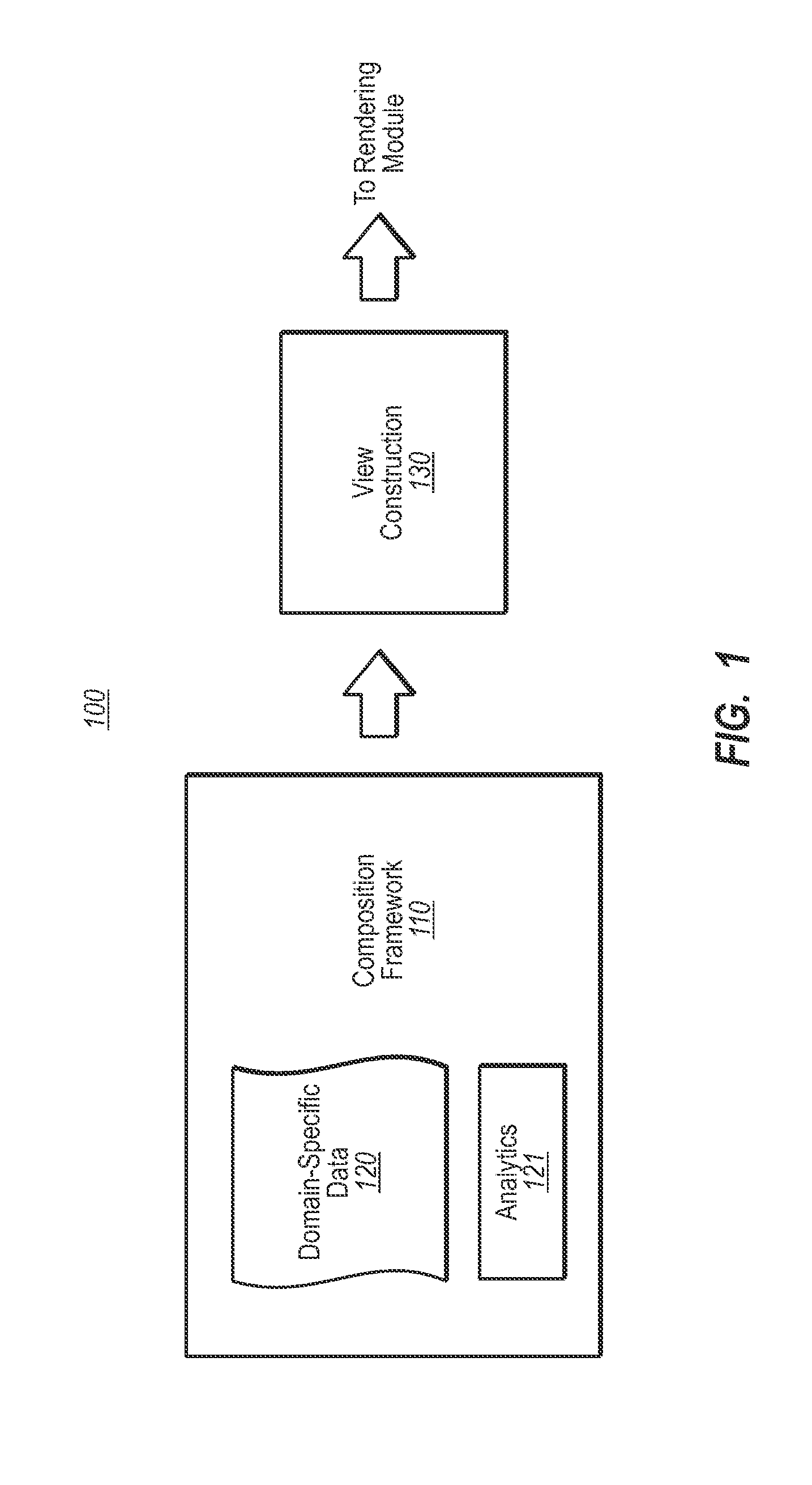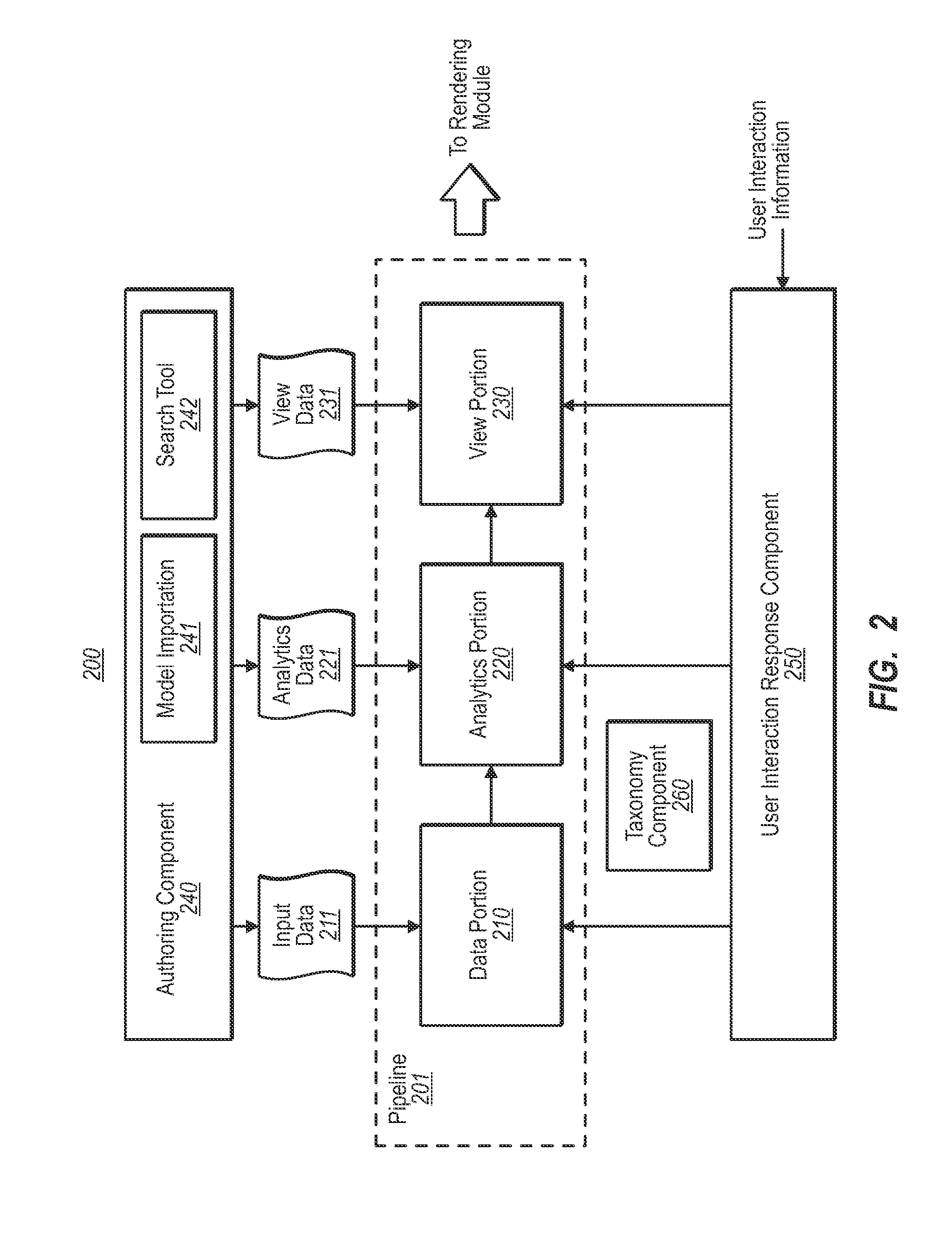Composing shapes and data series in geometries
- Summary
- Abstract
- Description
- Claims
- Application Information
AI Technical Summary
Benefits of technology
Problems solved by technology
Method used
Image
Examples
example # 2
Additional Example #2
[0256]Urban planning mash ups are becoming prominent. Using the principles described herein, analytics can be integrated into such solutions. A city planner will open a traffic model created by experts, and drag a bridge in from a gallery of road improvements. The bridge will bring with it analytical behavior like length constraints and high-wind operating limits. Via appropriate visualizations, the planner will see and compare the effect on traffic of different bridge types and placements. The principles described herein may be applied to any map scenarios where the map might be for a wide variety of purposes. The map might be for understanding the features of a terrain and finding directions to some location. The map might also be a visual backdrop for comparing regionalized data. More recently, maps are being used to create virtual worlds in which buildings, interiors and arbitrary 2-D or 3-D objects can be overlaid or positioned in the map. FIG...
example # 3
Additional Example #3
Visual Education
[0257]In domains like science, medicine, and demographics where complex data needs to be understood not just by domain practitioners but also the public, authors can use the principles described herein to create data visualizations that intrigue and engage the mass audience. They will use domain-specific metaphors, and impart the authors' sense of style. FIG. 31 is an illustration about children's education. FIG. 32 is a conventional illustration about population density. Conventionally, such visualizations are just static illustrations. With the principles described herein, these can become live, interactive experiences. For instance, by inputting a geographically distributed growth pattern as input data, a user might see the population peaks change. Some visualizations, where the authored model supports this, will let users do what-ifs. That is, the author may change some values and see the effect on that change on other values.
example # 4
Additional Example #4
Apply View Components to Parametric Targets
[0258]In some instances, it may be desirable to apply view components to various parametric targets (e.g., other view components), for example, as shown in FIGS. 33 and 34. In particular, the height of the panels in both FIGS. 33 and 34 represent Napoleon's army size during his ill-fated Russian campaign of 1812. In FIG. 33, the panels are applied to a parametric target that represents the actual path that Napoleon's army took. In FIG. 34, the panels are applied to a different parametric target: a helix. Thus, the view components (such as, the panels) may be applied to different parametric targets (such as, a view component representing the actual path that Napoleon's army took or a view component representing a helix).
[0259]The view components may be children of the parametric targets to which they are applied. For example, the panels in FIG. 33 may be children of the army path, while the panels in FIG. 34 may be child...
PUM
 Login to View More
Login to View More Abstract
Description
Claims
Application Information
 Login to View More
Login to View More - R&D
- Intellectual Property
- Life Sciences
- Materials
- Tech Scout
- Unparalleled Data Quality
- Higher Quality Content
- 60% Fewer Hallucinations
Browse by: Latest US Patents, China's latest patents, Technical Efficacy Thesaurus, Application Domain, Technology Topic, Popular Technical Reports.
© 2025 PatSnap. All rights reserved.Legal|Privacy policy|Modern Slavery Act Transparency Statement|Sitemap|About US| Contact US: help@patsnap.com



